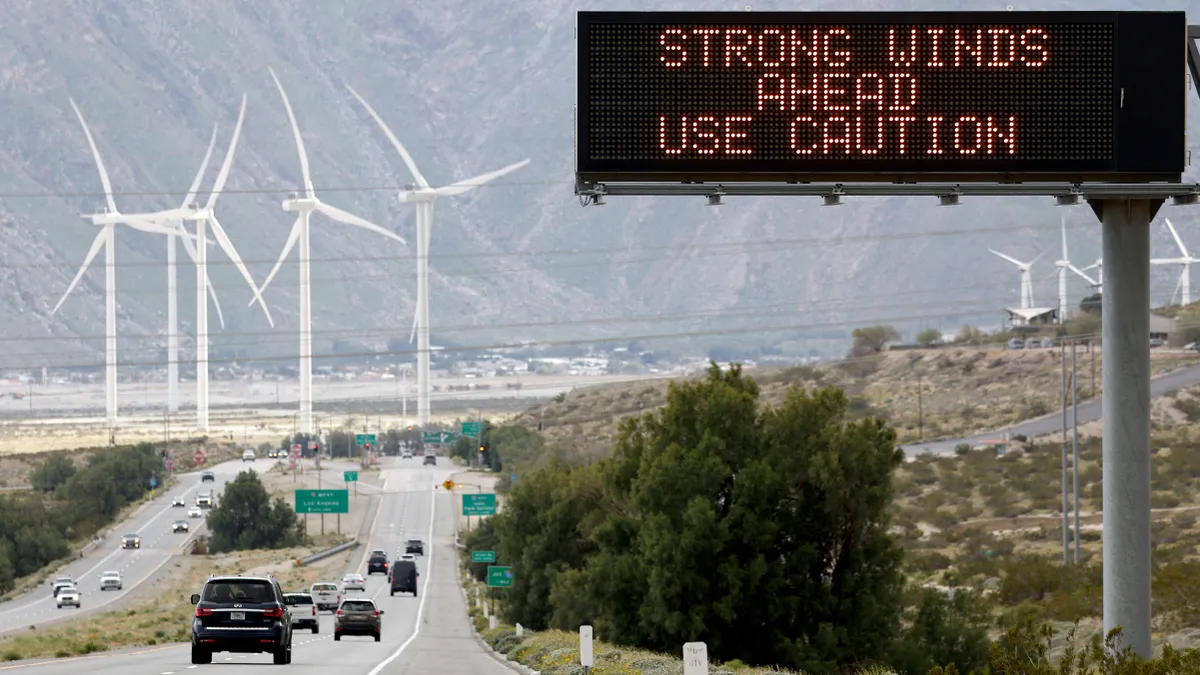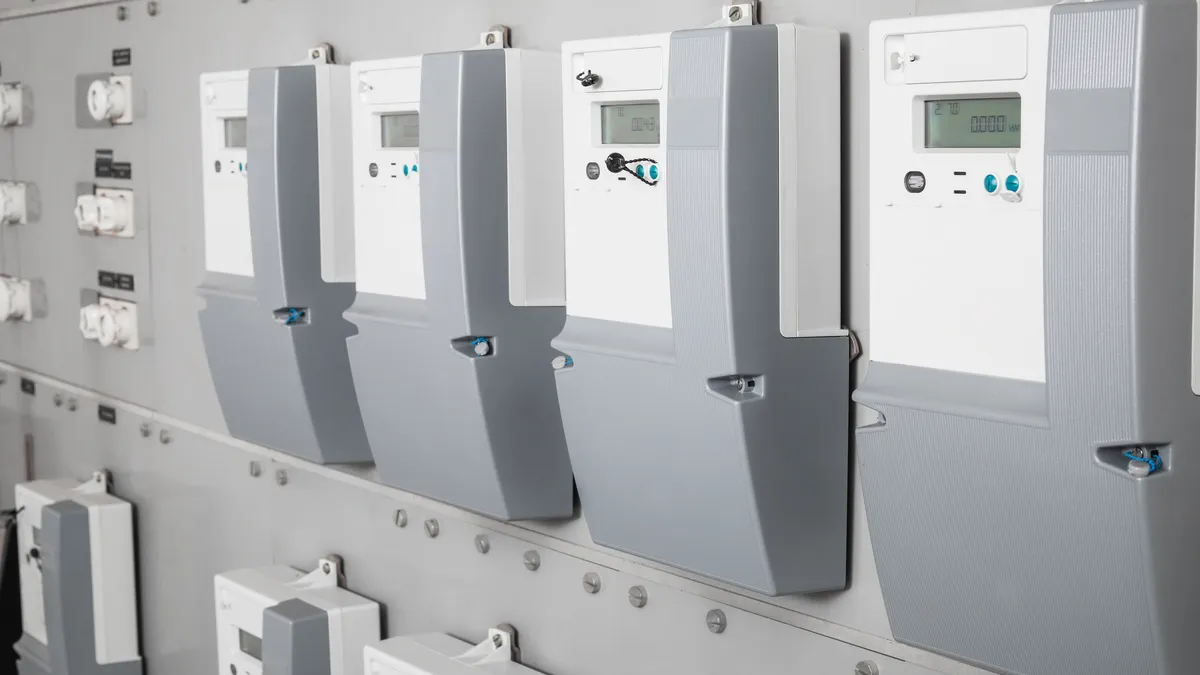Contrary to popular thinking, many utility executives see distributed energy resources (DER) as a significant opportunity. But few utility executives are sure what to make of that opportunity.
In New York, regulators are forging a path to turn the DER opportunity into reality — for consumers, market players and, yes, even utilities.
When the New York Public Service Commission (PSC) issued the latest order under the Reforming the Energy Vision (REV) docket last month, it tasked utilities with creating a digital marketplace for distributed energy resources — a radical departure from the traditional utility role, but one that firmly places utilities at the heart of the grid of the future.
New York’s prescription for problems at the grid edge: DERs
Historically, utilities have managed the system with a one-way flow of energy from the bulk power system down to the customer.
But in the coming years, New York’s utilities will develop the grid interface that will allow consumers, market players and utilities to interact like never before — enabling two-way flows of energy, services, and value across the distribution grid. If successful, it could become a model market structure for regions across the country and the world.
The basic assumption of the REV is that the problems occurring at the grid edge are best solved at the grid edge, according to Audrey Zibelman, chairwoman of the PSC.
Investing in significant new infrastructure to integrate DERs would not only make DERs redundant, but increase the costs of running the grid, the thinking goes. Instead, utilities will develop distributed system platforms (DPS) that leverage DERs to drive system efficiencies.
In many ways, New York’s utilities will play roles that are closer to that of an independent system operator than the traditional vertically integrated utility of the last century.
"The DSP is the air traffic controller of the grid,” Stuart Nachmias, vice president of energy policy and regulatory affairs at Consolidated Edison, told Utility Dive in an interview.
“The whole premise of the DSP and trying to use distributed resources to manage the grid is that we could invest in distributed resources as an alternative to some traditional investment,” he said. “There’s a lot of value to the DERs.”
“We don’t need to build new assets or bring in new supply,” Ken Daly, president of National Grid NY, told Utility Dive in an interview. “We just better optimize the supplies that are already out there.”
It’s all about figuring out “where resources might have more value to help us in managing the system,” Nachmias added.
“We know where there are spots on our system that can really benefit from renewables,” Daly said.
‘A piece of the revenue requirement’
How will utilities make money operating an increasingly complex distribution grid?
There are three opportunities for utilities under REV, Zibelman told Utility Dive in an interview last fall.
The first opportunity is to develop the DSP, she said. Utilities will be able to “take a piece of the revenue requirement” through the regulated services provided by the DSP.
The second opportunity is the procurement of distributed energy resources — a promising but “different revenue model” for utilities, according to Zibelman.
Take ConEd’s strategy for meeting projected load growth as a good example.
ConEd has been seeing 2-4% load growth in Brooklyn and Queens. Traditionally, the utility might have built a brand new substation to solve the problem — a solution that would cost $1.1 billion in this case. Instead, the utility will defer its need to build the substation after issuing an RFP for 52 MW of demand-side management solutions by 2018.
The PSC is “allowing us to capitalize and treat that investment as a regulatory asset and recover it over 10 years,” Nachmias said. “That makes it a little more comparable to what we’re giving up not doing the traditional investment.”
“Rather than a bunch of regulators and utility engineers sitting there saying, 'We know best,’ we're asking the market,” Zibelman said in an interview with Utility Dive. “We're saying, 'We have a problem. Can you solve it?'"
That’s the “perfect example” of how the DSP will work, Nachmias said.
Utility ownership will be 'the exception rather than the rule'
The third and final opportunity that the REV opens up is “a fairly robust retail market,” according to Zibelman.
The opportunity to play in the DER market directly is a mouthwatering possibility for the utility industry. Utilities in a few places have approached regulators to test the waters regarding direct utility ownership of distributed energy resources, such as rooftop solar.
While utility ownership is highly controversial and unlikely to become a standard utility business model, two utilities in Arizona asked for and received approval to launch their own rooftop solar programs. But it remains to be seen whether regulators in other jurisdictions will allow direct utility ownership of DERs.
The REV order issued last month was very clear about the possibility of this opportunity for utilities: "Utility ownership of DERs will be the exception rather than the rule."
The only situation where direct utility ownership of DERs will be considered is where the "markets have had an opportunity to provide a service and have failed to do so in a cost-effective manner," according to the order. "In the limited situation that utilities will be allowed to own DER as a regulated asset, they will be restricted to recovery of their actual costs."
“It’s an interesting debate,” noted ConEd’s Nachmias. “Because right now — in terms of ownership of distributed resources — we got nothing, third parties don’t have much, there’s not a lot out there. It will evolve.”
National Grid doesn’t see itself as the “major player” building DERs “in any scenario,” Daly said. But the utility confirmed it will play a role “filling in any gaps as the market evolves.”
One of those gaps may be community solar, a shared solar installation that allows customers to go solar when they might otherwise not be able to. It’s a business model that’s gaining traction with utilities across the U.S.
“We think there’s an opportunity for utilities to aggregate those types of customers — those who either couldn’t afford solar on the front end or don’t have the right physical configuration on the back end — and allow them to share in the benefits that right now developers and other customers are getting,” Daly explained.
For ConEd, which was part of a group of utilities asking the NY PSC to allow utilities to directly own DERs, “the exceptions are important,” Nachmias told Utility Dive.
While inherently limiting, “the exception allows us to really show where we might have more value” than the retail market, Nachmias said, specifically pointing to energy storage as a “critical asset” that the utility can use to help manage the grid.
Over the next few months, each of New York’s utilities are tasked with setting up demonstration projects to show how DERs can be used to manage the system. These projects will be important “to show it might be us vs. them as it’s being teed up,” Nachmias said. “It might be a ‘we.’ There might be joint ownership opportunities, or the markets may develop in ways that we can’t envision right now.”
Utilities are still 'the backbone'
While the REV opens up many new and exciting opportunities, it's important to remember that New York utilities will still play the same role they have played for the last century.
"We're basically the backbone of a system that provides very, very reliable power that’s critical to our customers," Daly said. “That’s the role we play now, and that’s how we want to play in the future."
“The good news — if you read through the order — is that we’ll continue to play that role,” he said.
But “what’s exciting” is that utilities will “now take on an enhanced role” as the integrator of renewables and distributed energy resources, he added, calling the DSP a “very natural extension of what we’ve been doing.”
At the end of the day,” Daly said, “it gives us the opportunity to … really advance the clean energy economy and do it in a way that gives our customers the most choice.”
Looking ahead at the REV docket
It’s still too early to tell how New York’s ambitious effort will pan out. But regulators, utilities and market players aren’t waiting to find out.
The PSC needs “to make certain that we are not slowing ourselves down by looking for the perfect end-route,” Zibelman told Utility Dive last fall.
The many moving parts of the REV will start to come into sharper focus over the coming year.
For starters, the REV docket has been split into two tracks – one addressing the development of the DSP, and the other dealing with utility ratemaking.
Utilities will need to identify areas on their system that could be upgraded using non-wires alternatives by May 1. They will then need to file proposals for demonstration projects by July 1. Finally, the state’s utilities will need to come out with their DSP plans by December 15, 2015.
The PSC staff will issue its straw proposal for the ratemaking track by June 1. That should give stakeholders a good look at how the PSC is thinking about ratemaking in a DSP world.
For now, utilities like National Grid are focusing on what Daly calls a “no regrets” strategy to implementing REV — optimizing the assets that are already in place.
Then, the utilities will likely move on to building the capabilities that will be needed in the future, such as creating two-way dialogue between the distribution control center and behind-the-meter assets.
“That will give us more flexibility as the DSP,” Daly said.
The bottom line: 'Talk to your regulators, talk to your customers'
Very few regions have reached the critical point where DERs become a serious threat to grid reliability. (Depending on who you talk to, that tipping point is typically pegged at anywhere between 10% and 20% penetration on a distribution circuit.)
But for utilities who are already dealing with this issue — or anticipate they soon will — New York is an example of how regulators can give utilities more certainty in a DER world. The opportunity to build and operate the DSP platform makes utilities essential to the development of a DER market — and may become a model that other states follow.
One development to watch will be the Distribution Resource Plans that California utilities will file with regulators this summer. What gets proposed in California will be a telling sign of how utilities at the forefront of grid transformation are thinking about the challenges and opportunities at the grid edge.
And for any utility that’s just beginning to deal with DER issues, ConEd’s Nachmias has a message.
“Talk to your regulators, talk to your customers,” he said. Utilities need to “understand what their interests are and how collectively between all the appropriate stakeholders … everyone should get together and talk about all these issues.”























